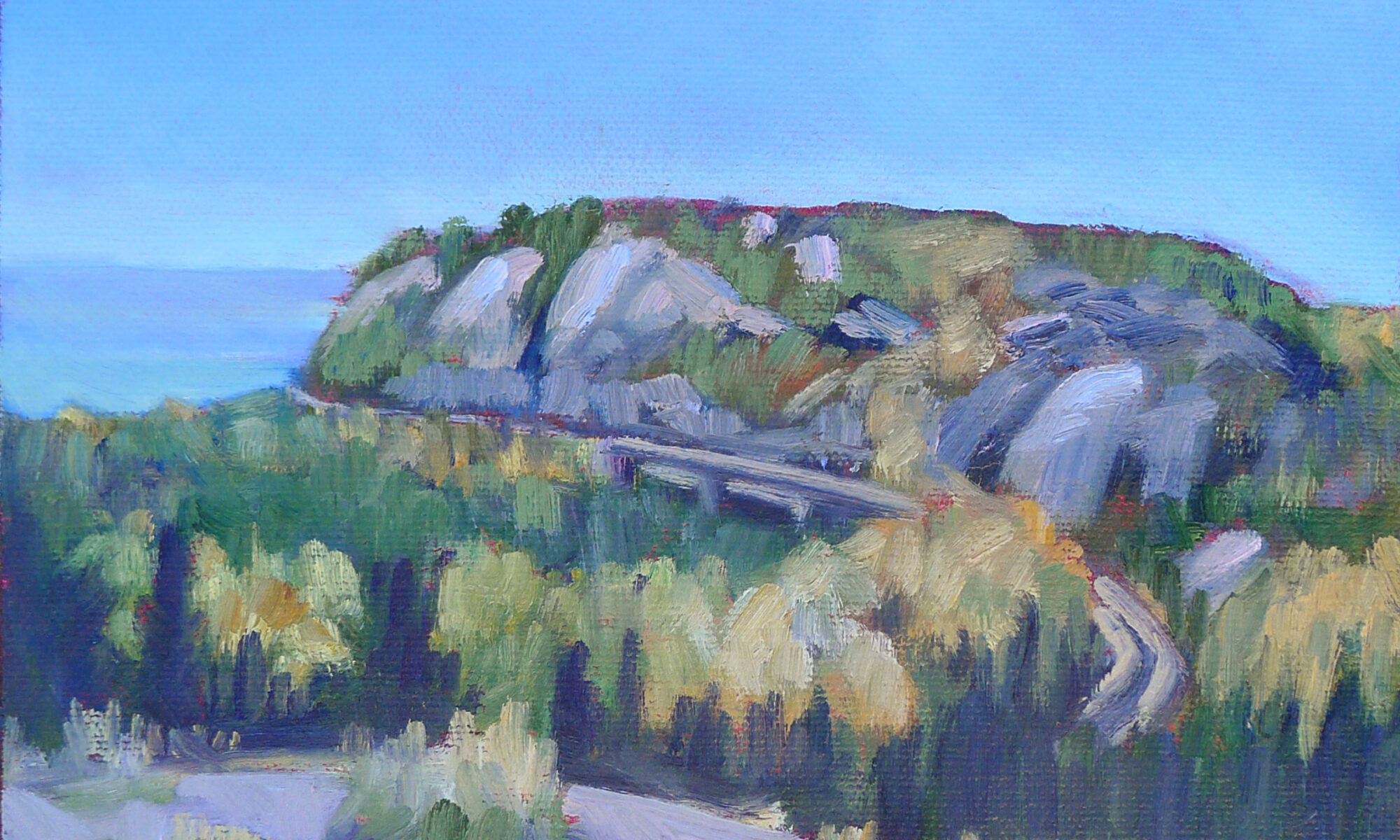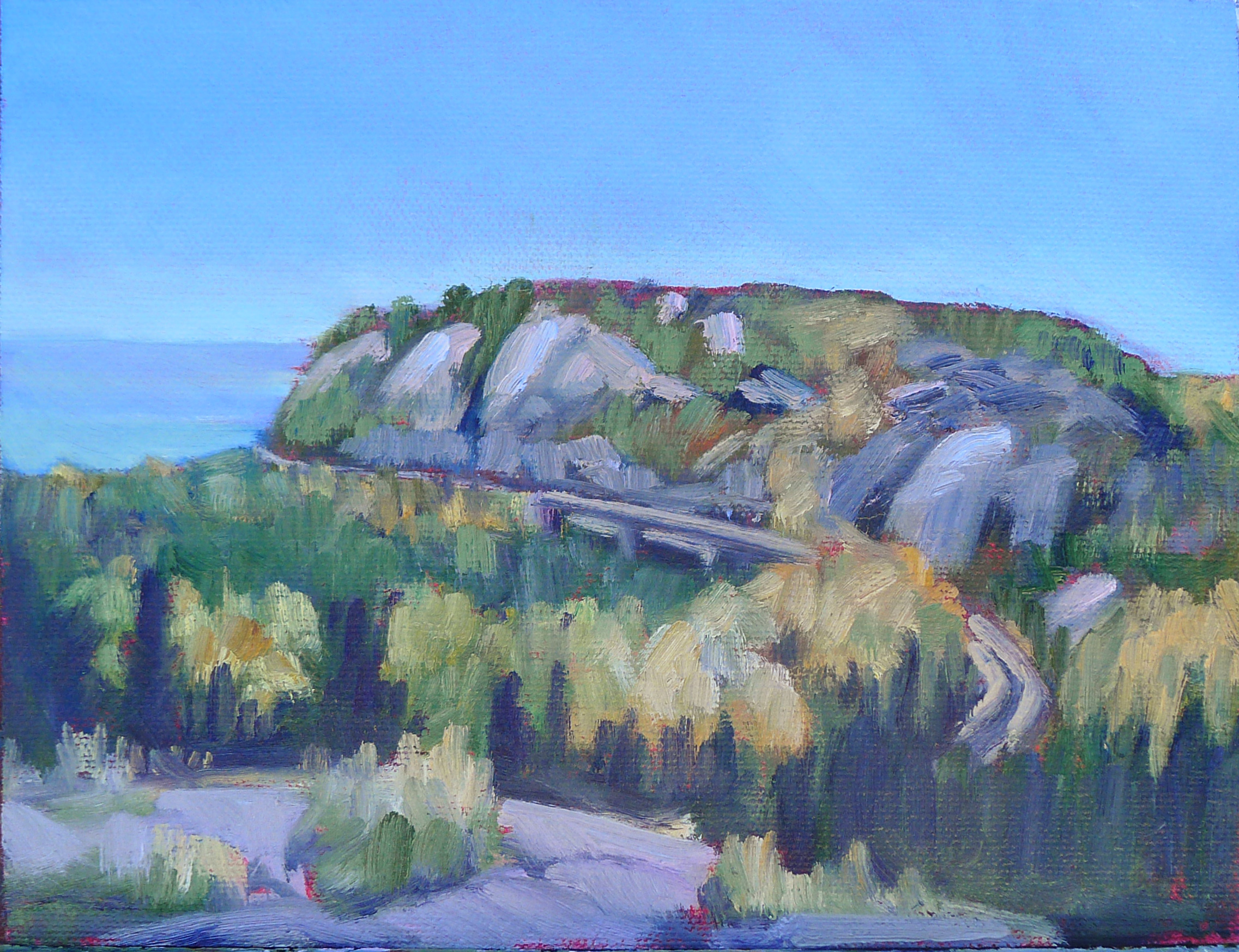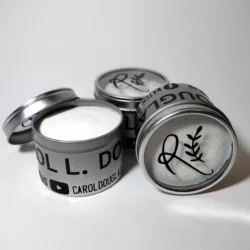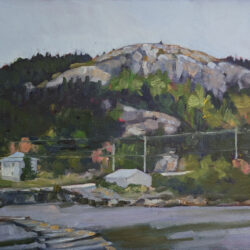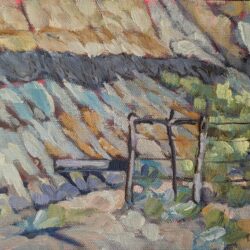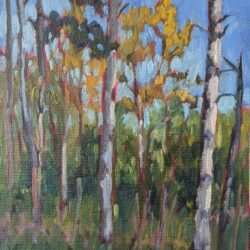Having sailed past the bay of Old Woman River, I booted fruitlessly along, looking for a place to paint Lake Superior. It was difficult; the sun was low on the horizon and bouncing into my eyes. Finally I saw this beautiful rail line snaking down a hillside in Lake Superior Provincial Park, on its way to Sault Ste. Marie.
At this point, we’d entered the historic Province of Upper Canada, established to accommodate and govern the United Empire Loyalists pouring across the border after the American Revolution. The Province of Upper Canada, confusingly, is south of the Province of Lower Canada. That dates from a time when directions were given in terms of navigation, not compass points.
We’d entered Ontario, which seems endless when driven west to east. Only Quebec is a bigger province, and much of it extends north where nobody goes anyway. Since I’m from Buffalo, I’ve driven long sections of Canadian Highway 401. I know that southern Ontario can be as exciting as Interstate 80 through Nebraska on a Sunday morning. That’s why we cut to the north as soon as we had the option.
But as yet we were still along the shores of Lake Superior, heading into Sault Ste. Marie. It used to be one city until the War of 1812 fixed the border right through the center of town. The Soo Locks, which are the greatest inland shipping canal in the world, are located on the American side. This being a strictly-Canadian trip, we didn’t stop.
Sault Ste. Marie is one of the oldest French settlements in North America, dating from 1688. It was the western terminus of the fur trading routes from Montreal. With a mixed population of Métis, First Nation and European people, it was a truly cosmopolitan settlement.
—
In 2016, my daughter Mary and I set off across Alaska and Canada on a Great White North Adventure, which you can read about starting here. We arrived in Anchorage at the beginning of September and got home in mid-October. In between, we visited every province but PEI (been there, done that), and Yukon Territory. In retrospect, it might have made more sense to do this during the summer, since Alaska and Canada threw a mess of strange weather at us.

